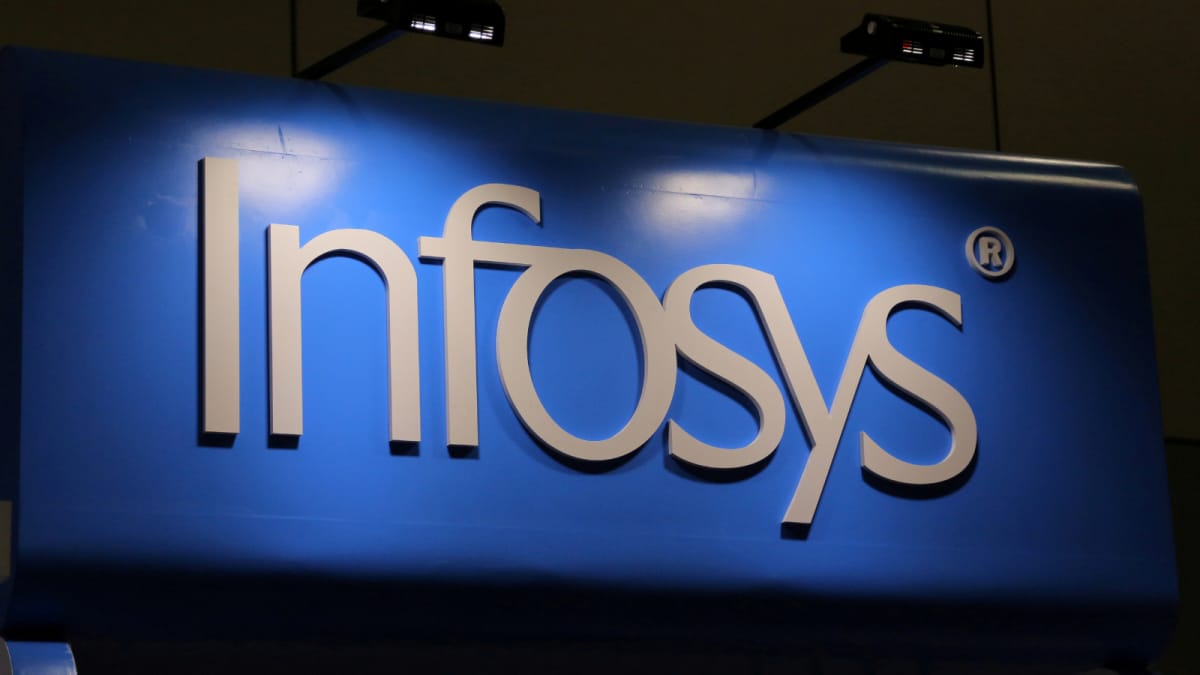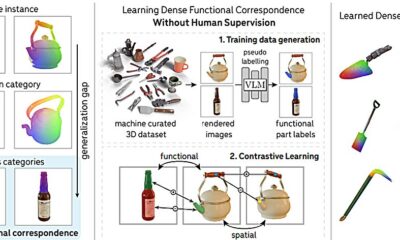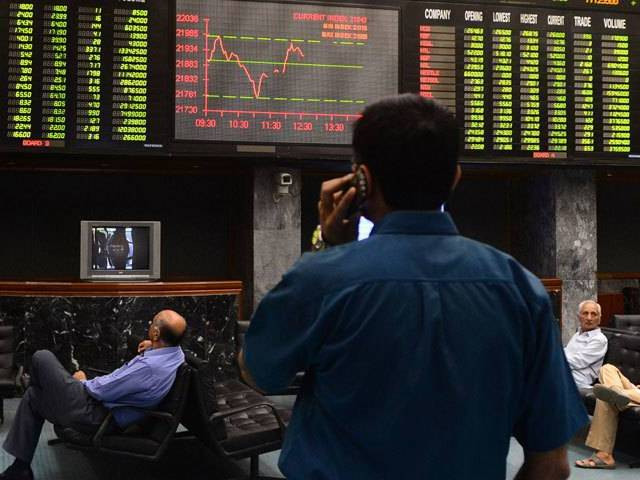Business
Agreement on freight corridor revised | The Express Tribune

ISLAMABAD:
The government has revised a draft commercial agreement on the dedicated freight corridor that gives Pakistan Railways the right to buy back assets.
Sources told The Express Tribune that a meeting of different stakeholders, chaired by Deputy Prime Minister and Foreign Minister Ishaq Dar, decided that the Railways Division would limit the timeframe for signing a phase-II commercial agreement. It was agreed that the phase-I commercial agreement would be revised by adding an exit clause whereby Pakistan Railways would have the right to buy back the concessionaire’s assets at the net book value and the stakeholders involved would initiate negotiations within 12 months of the commercial operation date (COD) for phase-II.
It was also decided to conclude negotiations within 45 days to finalise and sign the commercial agreement for phase-II. In case the negotiations remain unsuccessful, both parties will have the right to terminate the commercial agreement and Pakistan Railways will enjoy the right to buy back the concessionaire’s assets at the net book value.
The Ministry of Railways informed the meeting that the exit clause had been examined by a negotiation committee, which met on May 25, 2025. Committee members unanimously agreed on the exit clause, which was incorporated into the draft commercial agreement. It was also highlighted that the Ministry of Law and Justice had vetted the revised draft commercial agreement.
The Ministry of Railways apprised the Cabinet Committee on Inter-Governmental Commercial Transactions (CCoIGCT) that the government of Pakistan, represented by the Ministry of Railways, and the government of Dubai, represented by Ports, Customs and Free Zone Corporation, had signed on January 17, 2024 the Inter-Governmental Framework Agreement on Cooperation in the Railways Sector for investment and construction of a dedicated freight corridor including social logistics parks and rail freight terminals on the Pakistan Railways network.
It was recalled that the CCoIGCT had approved the constitution of a negotiation committee to deliberate on the draft commercial agreement along with variables and parameters for the price discovery mechanism during its meeting held on February 1, 2024. The decision of the CCoIGCT was ratified by the cabinet on February 5, 2024.
Furthermore, in a sitting of the Special Investment Facilitation Council (SIFC), held on October 28, 2024 and attended, amongst others, by DP World (a Dubai-nominated entity) and Pakistan Railways (a Pakistan-nominated entity), it was decided that the project would be executed in two phases. Therefore, as informed by the Ministry of Railways, the draft commercial agreement was based on phase-I of the project.
The railways ministry told the CCoIGCT that the negotiation committee had made recommendations for the commercial agreement, as negotiated between the parties, which may be approved by the CCoIGCT and exemptions from procurement and competition laws may be granted in accordance with Section 5 of the Inter-Governmental Commercial Transactions Act, 2022.
CCoIGCT was requested to approve the revised draft commercial agreement along with recommendations of the negotiation committee, as recorded in para-6 of the summary, to enable the Ministry of Railways to proceed further under the Inter-Governmental Commercial Transactions Act. During discussions, the railways ministry apprised the forum of compliance with the CCoIGCT decisions taken in July 2025, under which the ministry had been directed to explore domestic resources for the project and limit the timeframe for signing the commercial agreement for phase-II.
The ministry said that after extensive consultations with the stakeholders, a revised commercial agreement on the dedicated freight corridor had been drafted by incorporating the CCoIGCT’s directives. The forum appreciated the efforts made by the ministry in compliance with its directives and approved the proposals contained in para-6 of the summary. The CCoIGCT considered the summary titled “Approval of Modified Draft Commercial Agreement on Dedicated Freight Corridor” and gave the green-light to the proposals.
Business
‘We’re trying to shame them’: Upstart activist investors target America’s underperforming banks

Misha Zaitzeff and Vik Ghei, founders of HoldCo Asset Management, at their Fort Lauderdale, Florida, offices.
Courtesy: HoldCo
American banks have found an unlikely pair of adversaries in Vik Ghei and Misha Zaitzeff.
Since July, the nine-person hedge fund they run from Fort Lauderdale, Florida, called HoldCo, has challenged lenders with more than $200 billion in combined assets, demanding that they take swift action or face public campaigns to overthrow their boards and fire their CEOs.
The fund notched a victory this month after Comerica, under pressure from HoldCo, agreed to sell itself to rival Fifth Third for $10.9 billion in the biggest bank merger of the year. HoldCo has since announced activist campaigns against two smaller regional lenders, Boston-based Eastern Bank and Billings, Montana-based First Interstate.
A fourth bank is now in their sights, CNBC has learned exclusively: HoldCo plans to launch a proxy battle against Columbia Bank, a lender with $70 billion in assets and 350 branches across Western states, unless it can strike a deal with management.
HoldCo, with $2.6 billion in assets, is bringing back activism to an industry that has largely been insulated from it since the 2008 financial crisis. The demise of bank-specific hedge funds in the post-crisis years and regulatory resistance to mergers meant that underperforming CEOs faced little discipline from the markets until now, according to Ghei and Zaitzeff.
Regional banks have struggled to regain their footing after the 2023 crisis that consumed Silicon Valley Bank and First Republic, leaving them exposed to activists seeking undervalued targets. At the same time, mergers are now viewed as more likely to be approved by regulators in the Trump administration, giving activists like HoldCo a clear exit strategy.
Coming from a hedge fund that few outside of banking circles had heard of, HoldCo’s moves have garnered admiration in some corners of Wall Street, while making them a pariah in others.
Ghei and Zaitzeff say HoldCo has been banned from attending a banking conference held next month outside Miami by Piper Sandler, an investment bank known for advising regionals on mergers. A spokesman for Piper Sandler didn’t immediately have a comment.
The millennial upstarts now find themselves key players in a larger story of industry consolidation. While retail banking is dominated by three giants, JPMorgan Chase, Bank of America and Wells Fargo, the country has more than 4,400 banks, and a long-expected merger wave began this year.
Bad incentives
The HoldCo thesis on regional banks is simple: Many are undervalued because their CEOs have put their own interests above that of shareholders, Ghei and Zaitzeff told CNBC in interviews over the past month.
That’s because the CEOs earn millions of dollars more in annual compensation if they grow by acquiring other banks, even if the deals prove disastrous for shareholders, according to the investors. Bank boards mostly operate as rubber stamps for such deals, they say, because directors are often hand-picked by the CEOs themselves.
“We’re trying to shame them into doing the right thing,” Ghei, 43, told CNBC. “At some of the banks we own, the CEOs have doubled compensation while their stocks have dramatically underperformed, or even fallen.”
On top of that, some of the investment bankers and research analysts that cater to small and medium banks are complicit, because their firms earn fees from mergers, and shareholders are usually silent because they risk losing management access if they challenge bank leaders, said the HoldCo founders.
“We feel that the way to rectify this is to publicly shame banks and aggressively pursue things like proxy battles,” Ghei said. “CEOs should be fired, and the boards should be fired, because they rolled the dice and lost; there should be consequences.”
Regional banks face pressure to bulk up through mergers to compete with super regionals and megabanks, which have far larger budgets for technology and compliance, according to industry consultants who requested anonymity to speak candidly. Poorly-managed firms are more the exception than the rule, they said.
As a group, regional banks have trailed both larger peers and broader stock indexes in recent years, partly because of the hangover from the 2023 tumult. The S&P Regional Banking ETF is still 14% below its 2021 peak, and shares of regional lenders tumbled again this month on concern over a trio of defaults tied to alleged corporate fraud.
In April, after bank stocks plunged in the selloff sparked by President Donald Trump’s so-called “Liberation Day” tariff policies, HoldCo began loading up on shares of beaten-up regionals, including Columbia, Citizens Financial and KeyCorp.
Those bets kickstarted their recent round of activism and raised their profile: HoldCo “is quickly becoming a household name in both the regional banking space and the world of activism,” analyst Don Bilson wrote in an October 21 research note.
The firm’s rise has rattled executives across the U.S. regional banking landscape; several banks have quietly started reviewing their capital plans in anticipation of possible activist scrutiny, according to the industry advisors who spoke to CNBC.
HoldCo said it now owns more than $1 billion in regional bank shares.
‘Best job in the world’
Over steak dinners, Zoom meetings and phone calls, Ghei and Zaitzeff began private discussions with a succession of bank CEOs in recent months, hoping to persuade them to commit to their shareholder-friendly actions.
When that approach has failed, they’ve gone public, releasing their presentations online and in the pages of the Wall Street Journal and Bloomberg News.
It’s a playbook more familiar to other sectors including technology, media and health care, where hedge funds far larger than HoldCo have attempted to sway management with public campaigns.
“I wish I could say there’s more nuance involved,” Ghei said. “But you actually need to put the CEO’s job at risk and make this very legitimate case that you can defeat them.”
HoldCo’s campaign against Columbia Bank is one of the firm’s largest bets yet. Its position is worth roughly $150 million and makes up about 1.9% of the company’s voting shares.
In a 71-page presentation, the activist said that while CEO Clint Stein quadrupled Columbia Bank’s assets through two acquisitions since taking over in 2020, the bank’s shares have fallen 36% during his tenure.
At the same time, Stein’s most recent pay package rose 80% to $6.3 million from his 2021 compensation, the year he began announcing the takeovers.
Columbia Bank declined to comment for this article.
“Being a bank CEO is the best job in the world,” Ghei said. “You have incredible job security because shareholders never show their face and the board feels like they work for you. Everyone’s happy to meet you, and you have a bunch of investment bankers who want to make fees off of you.”
Stein and his chief operating officer flew to Fort Lauderdale in August to meet the activists at a steakhouse two blocks from HoldCo’s offices on bustling Las Olas Boulevard, according to Ghei and Zaitzeff.
Their meal was amicable enough, but the tone changed afterward when it became clear that HoldCo would pursue a proxy battle unless a deal was struck, meaning they would aim to replace directors with their own picks, with the ultimate goal of replacing Stein, according to the HoldCo duo.
In late September, the HoldCo founders delivered their presentation to board members, slide by slide, over a Zoom call.
HoldCo wants Columbia to swear off from doing more acquisitions, instead using excess cash to buy back their own cheap stock for five years, after which they should explore selling themselves to a larger bank.
“They are honestly accomplished people, but not in banking,” Ghei said of the Columbia directors. “I don’t think they understood how bad the transactions they did were.”
‘Don’t take it personally’
The HoldCo partners said they developed their appetite for confrontation in the rough-and-tumble world of distressed debt.
Ghei, a former Goldman Sachs analyst covering financial firms, had figured out a way to make money picking through the remains of banks that had collapsed in the 2008 financial crisis.
Then an analyst at Owl Creek, a hedge fund that specialized in the debt of failed companies, Ghei realized that bonds from the parent company of Washington Mutual were trading at deep discounts because everybody assumed that they wouldn’t be repaid.
But they were ultimately repaid at full price, plus interest, making hundreds of millions of dollars for Owl Creek, according to an American Banker profile of Ghei from 2013.
Ghei would repeat that trade at another Manhattan hedge fund, Tricadia, where he met Zaitzeff, a Brown University computer science graduate who ran models of new financial instruments called subprime collateralized debt obligations.
Tricadia made millions by both creating subprime CDOs and then separately betting that other CDOs would fail, similar to trades from Goldman Sachs and others chronicled in the Michael Lewis book “The Big Short.”
The men immediately hit it off, and in 2011 started their own firm out of “crummy offices” in New York’s Financial District, says Ghei. They called it HoldCo because of their early trades acquiring the debt of 70 holding companies whose banking subsidiaries had failed in the crisis.
Ghei and Zaitzeff say they would spend most of their waking hours over the next 14 years together, angering their wives with their singular focus on batting around ideas for investments until they came to consensus.
“We’re friends, first and foremost,” Zaitzeff, 42, said. “We spend a lot of time debating investments, but we don’t take it personally.”
They believed the bonds of dead banks had value because of assets like tax refunds on corporate ledgers. But the Federal Deposit Insurance Corporation, which took over the failed banks’ subsidiaries, believed it was entitled to the assets, not HoldCo.
So HoldCo battled the FDIC in bankruptcy courts around the country, winning enough of the time on the strength of their arguments to develop a reputation as scrappy fighters.
By 2013, the pair had raised their first institutional funds from an endowment; word of mouth then spread, and they eventually garnered investment from about 20 universities, hospitals and family offices in a series of ever-larger funds.
One battle after another
Their go-anywhere investment style led them to buy the distressed debt of a New Orleans-based lender named First NBC Bank in 2016; the bank had been established a decade earlier to help the city rebuild after Hurricane Katrina.
After realizing that First NBC would soon be undercapitalized, HoldCo shorted the lender and published letters revealing their concerns. The bank’s auditor resigned and the institution was seized by the FDIC. In 2023, the former First NBC CEO Ashton Ryan was sentenced to 14 years in prison for bank fraud.
It was experiences like that led Ghei and Zaitzeff to their dim view of bank management. By proving to themselves that they could identify situations where the market wasn’t functioning like it should, the HoldCo partners had the conviction to take on regional banks this year.
First NBC Bank Chief Executive Ashton Ryan, center.
Source: Nasdaq
Banks didn’t understand the scope of HoldCo’s ambitions at first, the partners said.
“People were surprisingly nice to us after Comerica,” Zaitzeff said. “When we went after Comerica, they viewed it as us going after a bigger bank. But a lot of regional banks view Eastern and First Interstate as much more like them.”
Bank CEOs may believe that if they don’t engage with HoldCo, they can avoid activist campaigns, Zaitzeff said. The activists believe that’s why they were blacklisted from a recent banking conference.
But the hedge fund has purchased almost 5% of the shares of Bank United, a Miami Lakes, Florida-based lender with $35.5 billion in assets, without speaking to management, according to the pair.
HoldCo plans to wage a proxy battle unless they can come to an agreement with management over increasing shareholder returns. Bank United didn’t immediately return messages seeking comment.
On Tuesday, after publication of this story, Bank United shares rose 4.9% and Columbia Bank rose 2.9% in midday trading, the two biggest risers of the more than 140 banks in the S&P Regional Banking ETF.
The investors, convinced of the righteousness of their position, say they also plan to publish regular dispatches about banks destroying shareholder value, even when they don’t hold a stake in the firm.
“The problem is that for so many years there’s been no accountability, and the world has gone insane,” Ghei said. “We’re trying to call out bad decisions and incent them into doing the right thing.”
— CNBC’s Gabriel Cortes contributed to this report.
Business
Apple hits a record! Becomes third tech giant to cross $4 trillion valuation; joins Microsoft, Nvidia club – The Times of India

Apple has reached a historic milestone, becoming the third Big Tech company to cross $4 trillion in market value, driven by strong demand for its latest iPhone lineup.The company’s shares were last up 0.2 per cent at $269.2 in early trading on Tuesday, marking a record high, reported news agency Reuters.Apple’s stock has surged nearly 13 per cent since the launch of the iPhone 17 series and iPhone Air on September 9, reversing earlier losses and pushing the stock into positive territory for the first time this year. Analysts said the robust demand for the new devices, especially in key markets such as the US and China, helped offset concerns about the company’s slower progress in artificial intelligence.“The iPhone accounts for over half of Apple’s profit and revenue, and the more phones they can get into the hands of people, the more they can drive people into their ecosystem,” said Chris Zaccarelli, chief investment officer at Northlight Asset Management, ahead of the milestone, as quoted by Reuters.According to data from Counterpoint Research, sales of the iPhone 17 outperformed its predecessor by 14 per cent in the US and China. The ultra-slim iPhone Air is also expected to help Apple fend off competition from Samsung Electronics.Brokerage Evercore ISI expects the strong iPhone demand to help Apple beat market expectations for the September quarter and issue a positive forecast for the December quarter. The company is set to announce its fourth-quarter earnings on October 30, according to CNBC.Apple’s cautious approach to AI continues to raise investor concerns, especially amid reports that some of its senior AI executives have moved to Meta. The company’s Apple Intelligence suite, including ChatGPT integration, has been rolled out slowly, while an AI upgrade to Siri has been delayed until next year.Zaccarelli added, “The lack of a well-understood artificial intelligence strategy is clearly one of the things that is an overhang for the stock. If they could figure out how to incorporate artificial intelligence in a way that would excite consumers and the market, you’d see a whole different company.”Apple joins Nvidia and Microsoft in the $4 trillion club. Nvidia remains the world’s most valuable company with a market cap of over $4.5 trillion, while Microsoft recently reclaimed its spot after shares rose 2.2 per cent following a new deal with OpenAI to restructure it into a public benefit corporation.
Business
Infosys Buyback 2025 Details: From Record Date To Tax Process; 5 Key Things You Should Know

Last Updated:
Infosys announces Rs 18000 crore share buyback at Rs 1800 per share. Promoters including Nandan Nilekani and Sudha Gopalakrishnan will not participate.

Infosys Shares Buyback 2025.
Infosys Buyback: Infosys, the country’s second-largest IT services company, has announced the record date for its largest-ever share buyback programme.
1. Infosys Buyback Size
Infosys has announced its largest-ever share buyback programme amounting to Rs 18,000 crore.
“The Board of Directors of the company at their meeting held on September 11, 2025, has considered and approved a proposal to buyback equity shares for an amount of Rs 18,000 crore at a price of Rs 1,800 per equity share,” Infosys said in an exchange filing.
2. Infosys Buyback: Record Date
Infosys has yet to fix the record date for buyback to determine the eligibility of shareholders set to receive the payment.
4. Promoters Not To Participate In Buyback
In an exchange filing dated October 22, Infosys stated that its promoters and the promoter group would not be participating in the company’s upcoming buyback. As of September 30, 2025, the promoters and promoter group collectively held a 14.30 percent stake in Infosys, with the remaining 85.46 percent owned by the public. Among the individual promoters, co-founder Nandan Nilekani held a 1.08 percent stake, while co-founders NR Narayana Murthy and Sudha Murthy held 0.40 percent and 0.91 percent, respectively. Their children, Rohan Murthy and Akshata Murthy, owned 1.60 percent and 1.03 percent each.
Co-founder Kris Gopalakrishnan held a 0.84 percent stake in the company, whereas his wife, Sudha Gopalakrishnan, owned 2.52 percent, making her the largest individual shareholder among the promoters. The announcement clarifies that the buyback will be entirely funded by public shareholders, with the promoter group opting not to participate in this capital return exercise.
4. Infosys Share Buyback: How Will Your Gains Be Taxed?
Before October 1, 2024, the tax on buybacks used to be paid by the company on the income distributed. However, as part of the Union Budget 2024 announcement, any buyback after October 1, 2024, will be taxed in the hands of investors as deemed dividend under the ‘income from other sources’.
“As per the amendment in Budget 2024, tax on any buyback made after 1st October, 2024 will not be applicable in the hands of the Company. However, the tax will be payable by the recipient shareholder on the total amount received from the buyback as deemed dividend in accordance with the newly inserted provision of Section 2(22)(f),” Cleartax said in its blog.
So, the Infosys buyback will be taxed in the hands of investors as a dividend income under the head ‘income from other sources’ at the applicable income tax slab. For instance, if you fall in the 20% tax bracket, the Rs 275 will be taxed at the rate of 20% (Rs 55 per share).
5. Infosys Share Buyback: How To Apply?
If you want to participate in an Infosys buyback, here’s the step-by-step process:
1. Check the record date and ensure your Infosys shares are in your demat by that date. It is important to note that the record date has not been announced yet.
2. Read the Letter of Offer (LoF) to note buyback price, window, size and entitlement.
3. Check your entitlement (how many shares you can tender) and decide quantity (you may oversubscribe).
4. Log in to your broker and go to Corporate Actions → Buyback, select the Infosys buyback and enter quantity.
5. Or submit the Tender Form to your broker/registrar offline if you prefer paper submission.
6. Broker/DP will block/debit the tendered shares from your demat (you don’t pay money).
7. After the window closes, check the acceptance/scale-down announcement (pro rata if oversubscribed). The Infosys buyback represents up to 2.41 per cent of the company’s total paid-up equity share capital.
8. Accepted shares are debited and proceeds credited to your bank account via your DP (typically within a week or two).

Varun Yadav is a Sub Editor at News18 Business Digital. He writes articles on markets, personal finance, technology, and more. He completed his post-graduation diploma in English Journalism from the Indian Inst…Read More
Varun Yadav is a Sub Editor at News18 Business Digital. He writes articles on markets, personal finance, technology, and more. He completed his post-graduation diploma in English Journalism from the Indian Inst… Read More
October 25, 2025, 16:52 IST
Read More
-

 Fashion1 week ago
Fashion1 week agoChinese woman charged over gold theft at Paris Natural History Museum
-

 Tech7 days ago
Tech7 days agoThis Smart Warming Mug Is Marked Down by $60
-

 Fashion1 week ago
Fashion1 week agoeBay UK seller fee removal sends revenue down but profits rise
-

 Entertainment1 week ago
Entertainment1 week agoJohn Grisham unveils his first-ever mystery, “The Widow”
-

 Tech1 week ago
Tech1 week agoEaster Island’s Moai Statues May Have Walked to Where They Now Stand
-

 Tech1 week ago
Tech1 week agoOpenAI has slipped shopping into ChatGPT users’ chats—here’s why that matters
-

 Tech1 week ago
Tech1 week agoAI model could boost robot intelligence via object recognition
-

 Fashion1 week ago
Fashion1 week agoNew EU strategy proposed to shape global clean, resilient transition














